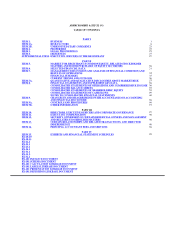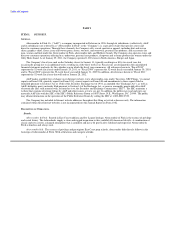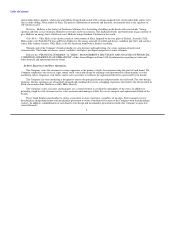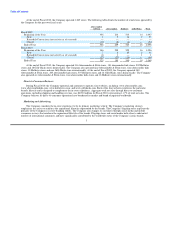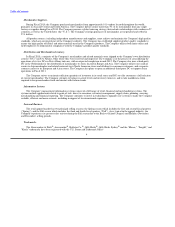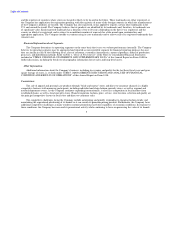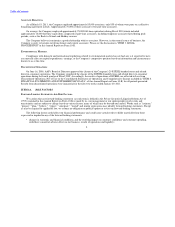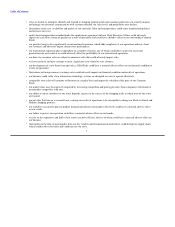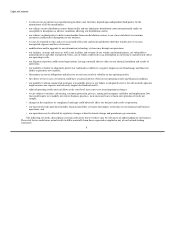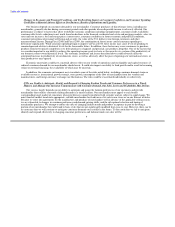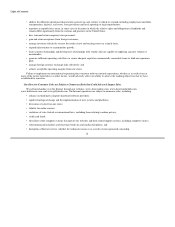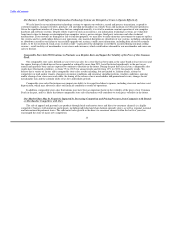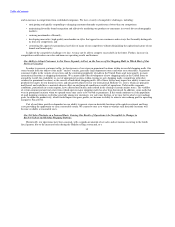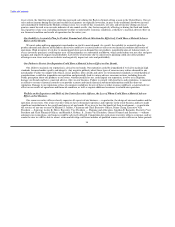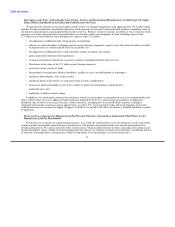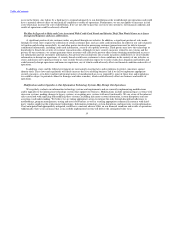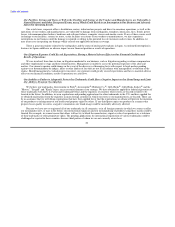Abercrombie & Fitch 2010 Annual Report Download - page 13
Download and view the complete annual report
Please find page 13 of the 2010 Abercrombie & Fitch annual report below. You can navigate through the pages in the report by either clicking on the pages listed below, or by using the keyword search tool below to find specific information within the annual report.
Table of Contents
adversely affected. Inventory levels for certain merchandise styles no longer considered to be "on trend" may increase, leading to
higher markdowns to reduce excess inventory or increases in inventory valuation reserves. A distressed economic and retail
environment, in which many of our competitors continue to engage in aggressive promotional activities, increases the importance of
reacting appropriately to changing consumer preferences and fashion trends. Conversely, if we underestimate consumer demand for
our merchandise or if our manufacturers fail to supply quality products in a timely manner, we may experience inventory shortages,
which may negatively impact customer relationships, diminish brand loyalty and result in lost sales. Any of these events could
significantly harm our operating results and financial condition.
Fluctuations in the Cost, Availability and Quality of Raw Materials, Labor and Transportation, Could Cause Manufacturing
Delays and Increase Our Costs.
Fluctuations in the cost, availability and quality of the fabrics or other raw materials used to manufacture our merchandise could
have a material adverse effect on our cost of goods, or our ability to meet customer demand. The prices for such fabrics depend largely
on the market prices for the raw materials used to produce them, particularly cotton. During the past 12 months alone, the price of
cotton has nearly tripled based on Index A. The price and availability of such raw materials may fluctuate significantly, depending on
many factors, including crop yields and weather patterns. Such factors may be exacerbated by legislation and regulations associated
with global climate change.
In addition, the cost of labor at many of our third-party manufacturers has been increasing significantly and, as the middle class
in developing countries continues to grow, it is unlikely that such cost pressure will abate. The cost of transportation has been
increasing as well, and, if the price of oil continues to increase, and as there continues to be significant unrest in the Middle East, it is
unlikely that such cost pressure will abate.
In the future, we may not be able to pass all or a portion of higher raw materials prices or labor or transportation costs on to our
customers. These increasing costs of production could also adversely affect our ability to achieve the gross margin objectives we have
established for ourselves as one component of our roadmap.
Equity-Based Compensation Awarded Under the Employment Agreement with Our Chief Executive Officer Could Adversely
Impact Our Cash Flows, Financial Position or Results of Operations and Could have a Dilutive Effect on Our Outstanding
Common Stock.
Under the Employment Agreement, entered into as of December 19, 2008, between Abercrombie & Fitch Co. and Michael S.
Jeffries, our Chairman and Chief Executive Officer (the "Employment Agreement"), Mr. Jeffries received grants (the "Retention
Grants") of stock appreciation rights. In addition to the Retention Grants, Mr. Jeffries is also eligible to receive two equity-based
grants during each fiscal year of the term of the Employment Agreement starting with Fiscal 2009 (each, a "Semi-Annual Grant"). The
value of a Semi-Annual Grant is uncertain and dependent on the future market price of our Common Stock and our financial
performance. To date, Mr. Jeffries has received Semi-Annual Grants, in aggregate, of 3,463,972 stock appreciation rights.
In connection with the Semi-Annual Grants contemplated by the Employment Agreement, the related compensation expense
could significantly impact our results of operations. In addition, the significant number of shares of Common Stock which could be
issued to settle the Retention Grants and the Semi-Annual Grants is uncertain and dependent on the future market price of our
Common Stock and our financial
10


